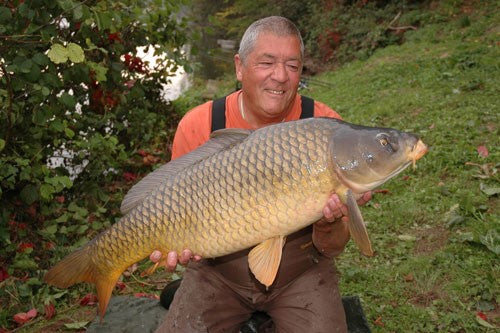Let’s continue this mini-series about fishing French rivers with a look at a few carp fishing basics...
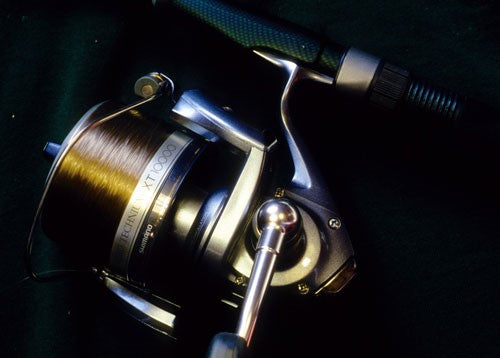
French rivers come in all shapes and sizes and I have fished them all; the swiftly flowing, half mile wide Loire, the gentle Charente, the tiny Butonne and the powerful Lot and one thing I have learned is that it is impossible to generalise with tackle and tactics. The first thing to consider is your line strength. Obviously the greater the breaking strain the thicker your nylon line will be, and this can cause problems coping with the current. It is therefore, a bit of a juggling act balancing the need for strong line against the dictates of the current. When using mono I look for a tough, abrasion resistant line of at least 0.40mm (usually around 18lb breaking strain).
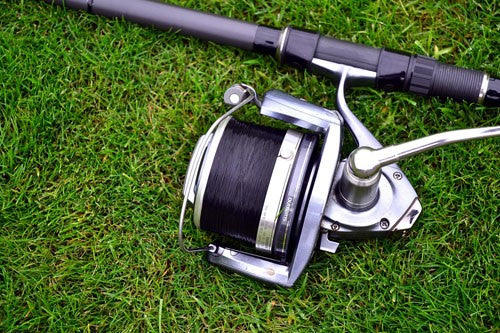
However, for 90% of my river fishing I use braid on the reels, as it is generally much finer for its breaking strain compared to mono or fluoro, it is also more abrasion resistant and is considerably more sensitive. There are three types of braid, floating, sinking and neutral buoyancy and it is the latter that I prefer. Most rivers are full of snags and/or rocks and stones and a sinking braid can easily get caught in the river bed. This is 50lb PowerPro Dyneema braid, which you may think a tad on the strong side. Yes, it is pretty over-gunned for river use but I feel more confident going in heavy rather than light.
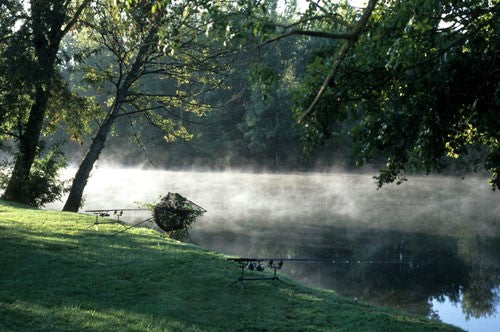
A rod pod can be a big asset on rivers. Once the full heat of the Continental summer kicks into gear the banks become baked to the consistency of set concrete and you will struggle to get banksticks into the ground. You can fish up to four rods on the French licence so on occasions I use two lightweight pods so as to spread the coverage to greater effect.
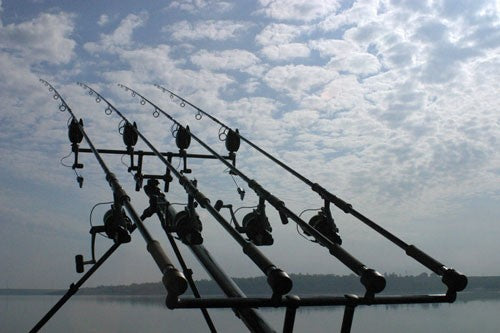
However, at times you will find that a much more substantial pod is called for and I like the solid build and versatility of the Fox Sky Pod. With the 4-rod bars front and back you can set up on even the hardest surface without worrying that the whole lot is going to tumble into the river on a savage take (and most river takes are just that).
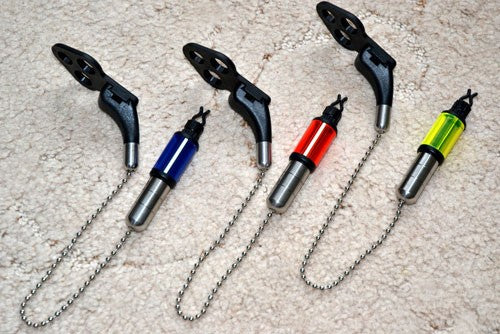
Bite indication is not something you really need to worry about too much as in my experience takes are blistering one tone screamers, regardless of which way they run. However, there will be times when you need to know when a carp has picked up your hookbait and then moved downstream (assuming you are fishing upstream, more of which in a moment). Once again I prefer to use very simple indicators purely and simply for convenience sake. Straightforward bobbins do me fine, but I prefer to use the one that have the option of adding weight by using stainless steel collars, as shown here.
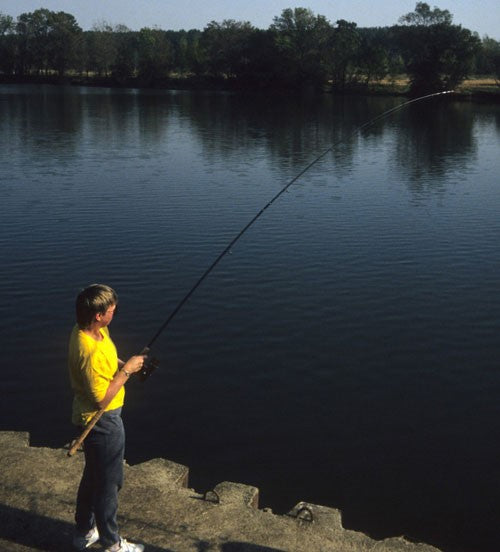
As for choice of rod, well I guess a lot depends on how far you want to cast, how much lead you will need and how powerful the current is likely to be. Some rivers such as the Maine have comparatively little flow from late spring through to the start of the winter months so you can get away with generally lighter rods. Here my wife Carole plays a river Maine carp on a delicate little toothpick of a rod, a 2lb test 11’ blank from Sportex, which she built herself way back in the mists of time!
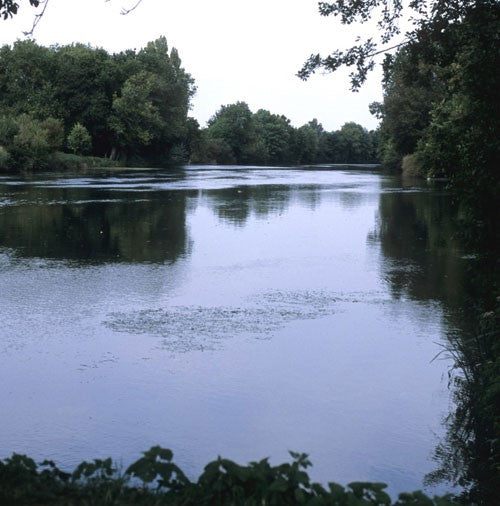
On the other hand, rivers like the Loire, Charente, Garonne and the like run full bore all year round and require a lot of lead to hold bottom and you’ll need a bit more poke in the rod to cope with the flow and the casting weight. Weed can also play its part in determining choice of rod. For these types of river I’d suggest a rod of 3.25lb-3.50lb test. I prefer softer rods with more of a compound taper. Here a deep section of night fishing bank at Cognac presents a considerable challenge with its deep and powerful flow. Add to that the fact that it is also choked with weed and you have a veritable carp haven to explore.

For most of my river fishing these days I use my old and trusted Fox Horizons (the original models) in 2.75lb. These are still going strong after over ten years of heavy use and I simply adore them. Their action is perfect for river fishing (though this photo is actually on a lake!). In the end I guess most anglers will have their favourite rods and as long as yours are up to the task then there is no point in looking elsewhere.
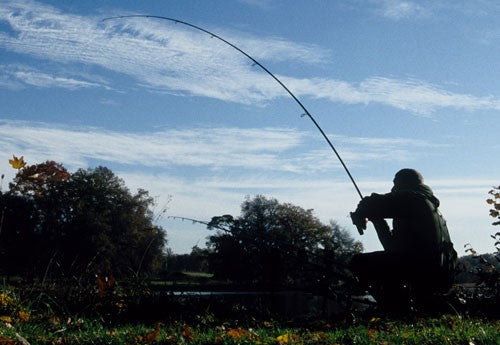
Mind you, I think soft rods are better on most rivers than billiard cue-style rods and this is all down to how carp fight in a current. Generally speaking they almost always try to get way downstream of you and the further away they go, the harder they are to control and to bring back up against the current. During the fight carp tend to turn sideways onto the flow, allowing the current to push against the large flat expanse of their flank. The bigger the fish and the more powerful the flow, the harder you will have to work to get the fish upstream again. If possible you should try to bully them in the early stages of the fight to try to prevent them from getting too far downstream but it they do manage to put some distance between you and it, then the soft rods really comes into its own by absorbing the head shakes and lunges of the carp during the fight. Here you can see the nice soft progressive action of a good river rod.
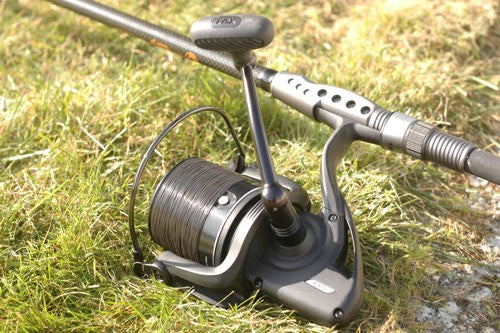
Reels are very much a matter of personal choice. The big two reel makers rule the roost for good reasons as they are class products, however, it is good to see alternative manufacturers entering the market. At present I am using the new Fox FX11 reels and I have to say, I love them! The line lay is superb with little or no overlap and as a result they cast like a dream and the retrieve is effortless. My other set of reels are Shimano Aero 10000XT models (see pix 1 and 2), which are to my mind the best reels ever made and while they are no longer made, 2nd hand models can be found on auction sites for around about £300…each!
Generally speaking large capacity reels are more versatile on the rivers. Remember, you can cast a short way with a big reel but you cannot cast a long way with a small one.
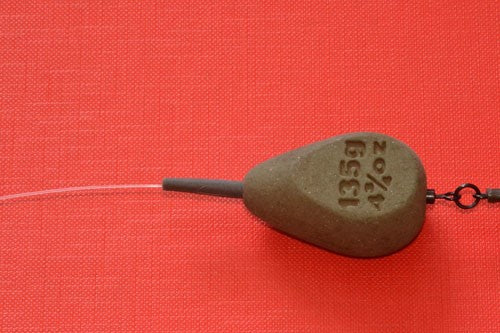
We have already looked at a few rigs for the rivers so let’s just have a brief look at the rest of the terminal tackle. Generally speaking I prefer in-line leads but I always ensure that the lead itself can pull free of the inline rubber in the event that it snags in the bottom.
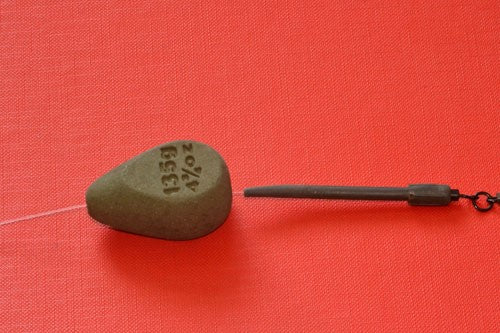

These Fox leads are ideal as they slip off the one-piece insert comparatively easily and the large bore in the middle of the lead allows it to pass over a leader knot with ease.

When you are faced with a rocky or snag-strewn riverbed then you would be well advised to use lead clips. I like the ones with the locking pin that attaches the clip to the hooklink swivel, thus ensuring the lead is discharged instantly on the take. Usually once the lead has gone carp tend to come well up off the bottom and you should be able to bully the fish up the top. Once you have got the upper hand like this you can do more to prevent it from running downstream, which as we have already discussed, can make landing the fish trickier. Rather than use a tail rubber on the spigot of the clip I prefer to secure the lead using several turns of PVA string. This guarantees that the lead will get dumped on the take.

Here’s Our Lass again with another nice common of about 25lb from the Charente, one of our favourite French rivers. It is stiff with carp throughout its length and there are plenty of night fishing zones with easy access to most of them. Again she was faced with a powerful flow yet by casting upstream her leads stayed in position, even though the river was carrying a lot of debris after recent heavy rains.

One thing I can promise you; when you get stuck into a river fish not only will you will be astonished at its power, This long sleek torpedo of a common from the River Lot yanked the rod off the rests and dragged it along the bank about ten yards before I managed to grab hold of the butt. It weighs 18lb but just look at that sleek powerful body. Most river fish really do pull your arms off!

On many of the French rivers the carp are left to their own devices and it is quite likely that the carp you land will never have been caught before. They are very adept at avoiding pressure and this means they spook away from bankside parties, loud noise and bright lights. That’s why you may often find better fishing and bigger fish in the non-night fishing stretches of the river. We tend not to fish nights anyway and tend to actually avoid the areas where night fishing is permitted, so we tend to look for quiet out of the way spots and on a few occasions we have even hired a gite with a stretch of the river running about 20m from the back door. The river is a small arm of the Charente and as you can see it is little more than a stream, but it holds carp to over thirty pounds. This photo shows the barbeque area of the gite and if you look carefully you can just see the rods at the bottom left of the photo.
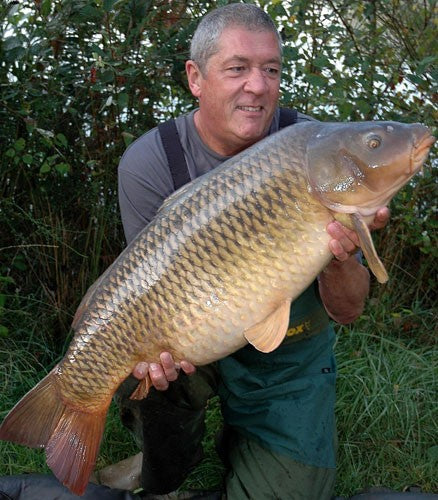
This magnificent common weighed 36lb and was caught from the river at the bottom of the garden of the gite shown in the previous photo. In all probability it had never been hooked before, let alone landed.
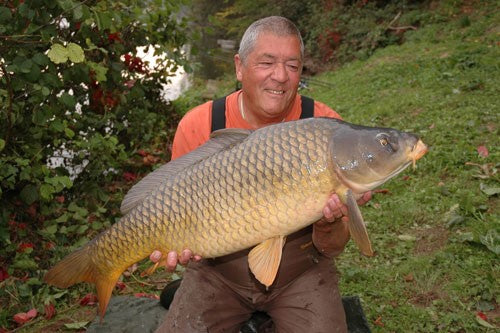
So that just about wraps up this 3-part look at rivers. I hope that this little mini series may have inspired you to have a look at the rivers so please don’t restrict yourself to the pay lakes or even to the open barrages. There is so much to enjoy about carp fishing the rivers and if you are lucky like we have been you will not even see another carp angler!
Written by Ken Townley

